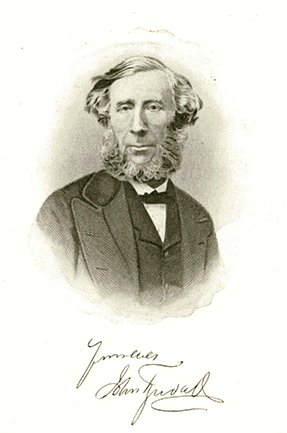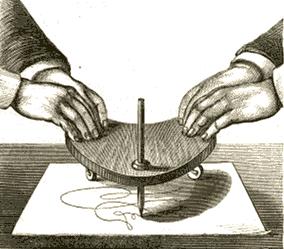Science, Religion, and John Tyndall
Today, an agnostic Victorian physicist looks for God. The University of Houston's College of Engineering presents this series about the machines that make our civilization run, and the people whose ingenuity created them.
When we think about science/religion tensions in the 19th century, we think about discourse gone bad. We think about creationists and evolutionists overstating their beliefs. We hear the either/or's of people who didnít know how to temper their claims with their own inner doubts.
But there was an undercurrent of balance as well. The great intellects then, as in any age, were driven by curiosity. They acknowledged that, while some things in this world had yielded to human description, a great deal was still open to question.
The Irish-born Victorian physicist, John Tyndall, asked such questions all his life. In 1861, then only 41, he wrote on prayer and natural law. In 1867 he wrote about miracles. He wasn't debunking them. He was seriously analysing the premises in praying for rain, or for healing. And, in the end, he had the good grace to resolve nothing -- but only to formulate his own questions.
Tyndall took on the thorny questions of cosmology and creation in 1874 when he delivered a famous lecture -- the Belfast Address. That unleashed a firestorm of criticism. Afterward, Tyndall wrote two more articles sifting all his critics had to say. And he did so with remarkably little rancor or defensiveness.
Tyndall had previously appeared in an 1868 Scientific American article on spirit writing. America was obsessed with death, afterlife, spiritualism. The article described a planchette -- a heart-shaped plate on rollers carrying a pencil. Two people place their fingers on opposite sides and clear their minds. The planchette begins to move and write out spirit messages.
The article tells how John Tyndall and his older colleague, Michael Faraday, had offered to study the planchette objectively -- and how the spirit-writing people showed no interest in cooperating.
The odd subtext of that offer was that Faraday was intensely religious, and Tyndall was as fascinated with Faraday's convictions as he was with prayer, miracles, and cosmology. Faraday "drinks from a fount on Sunday which refreshes his soul for a week," said the agnostic Tyndall with obvious fascination -- and, perhaps, a trace of envy.
Tyndall visited America to lecture in 1872 and 1873. He earned a lot of money. Then he gave it back. He set up a fund to support science teaching in America. He was as intent in his pilgrimage as any of his critics were in theirs. He knew what they often forgot -- that God must be found behind the unanswered question.
In that, Tyndall was a missionary -- inviting us all to join his search, to seek out our ignorance -- and surely to keep from making claims that outrun the scope of our own revelation.
I'm John Lienhard, at the University of Houston, where we're interested in the way inventive minds work.
(Theme music)
Tyndall, J., Fragments of Science, Vol. II. New York: D. Appleton and Co., 1899, Chapters I to IV and IX to XI.
What is a Planchette? Scientific American, Vol. XIX, No. 2, July 8, 1868, pp. 17-18.
Tyndall, J., Heat and Cold. Scientific American, Vol. XVIII, No. 1, January-April, 1868, pp. 83-85, 99-101, 116-117, 132, 148-149, 164-165, 179, 196-197, 211-212, 226-227.
For more on Tyndall see Episodes 192, 531, 624, 642, and 857.
I am grateful to Pat Bozeman, Special Collections, UH Libraries, for flagging the old volumes of Scientific American with their many references to John Tyndall.

John Tyndall, from the frontispiece of his book, Forms of Water in Clouds and Rivers, Ice and Glaciers, 1874
From a 19th-century frontispiece

Picture of a planchette from the Scientific American article cited above
Image courtesy of Special Collections, UH Library